Threatened flora finds a new home at Mount Vandyke
In the pouring rain, an enthusiastic and committed team from the Glenelg Hopkins Catchment Management Authority (GHCMA) joined NGT’s John and Angela at Mount Vandyke in mid-September to ‘grass a volcano in the rain‘ (watch the GHCMA’s video here on Facebook). That is, to plant out some very special grassland species at NGT’s Mount Vandyke Restoration Reserve.
As part of the GHCMA’s ‘Saving 17’ project, the GHCMA has been working to set up seed production areas for threatened and culturally significant grassland plants of the Victorian Volcanic Plain. Their nursery has been so successful that they had excess plants that needed to go in the ground asap. Luckily for us, Mount Vandyke is one of the sites selected to establish new populations of these threatened species, and was the first recipient site of the season!
Mount Vandyke Restoration Reserve, for those that don’t know, is a unique volcanic peak, sticking out in the midst of Cobboboonee National Park in south-western Victoria. Much of it was originally a native grassland (read more about Mt Vandyke’s vegetation communities here), but it has a long history of farming and a more recent phase of commercial plantation forestry. John and the rest of the NGT team have been busily restoring it over the past couple of years, with a combination of direct seedling, burning, tubestock planting and more. This is a multi-faceted ecological restoration project, where grassland restoration is taking place behind a predator-proof fence that will be used as a safe haven for future small mammal recovery projects.
The species list from this planting includes two plants on the national threatened species list (Senecio macrocarpus – Large-fruit Fireweed and Rutidosis leptorhynchoides – Button Wrinklewort), as well as some that are listed as critically endangered and endangered in Victoria. One of the state listed plants is Microseris scapigera (Murnong/Yam-daisy). That name might sound familiar to you, as last month we shared an article about planting a different species of Murnong/Yam-daisy (Microseris lanceolata) at Eaglehawk Waterhole is SA. There were 840 plants planted by the small team on the day.
As John says “Grassland restoration is extremely challenging, even at the best of times. Apart from the variations in the weather and a changing climate, seed availability is extremely restricted”. These plants are a fantastic addition to our restoration here, and will contribute to the conservation of these important threatened species. We look forward to watching them grow and providing some updates on their progress in the future. A big thanks to the GHCMA (Ben Zeeman and team) for providing AND planting these special plants, and in such adverse conditions! Well done team!
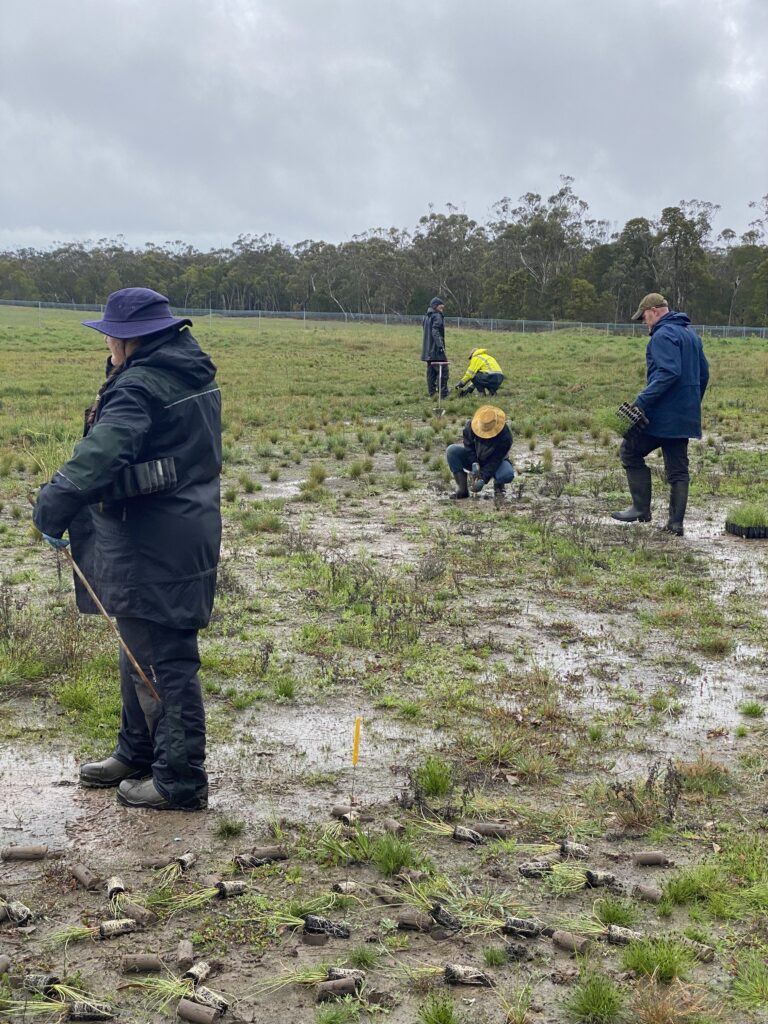
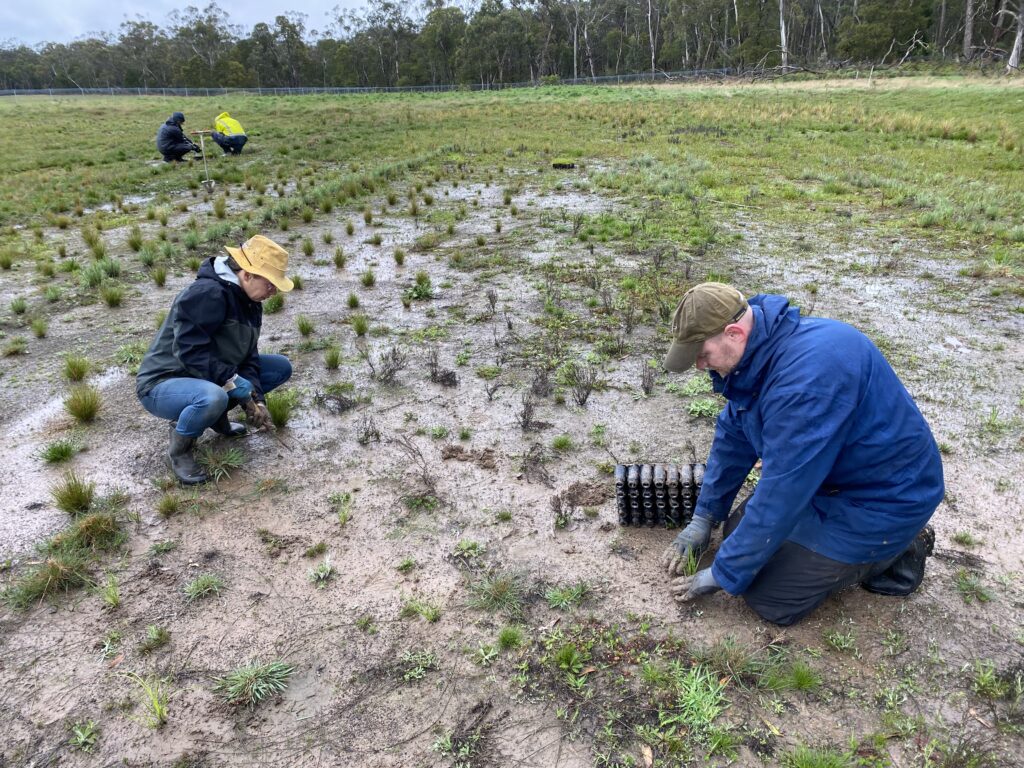
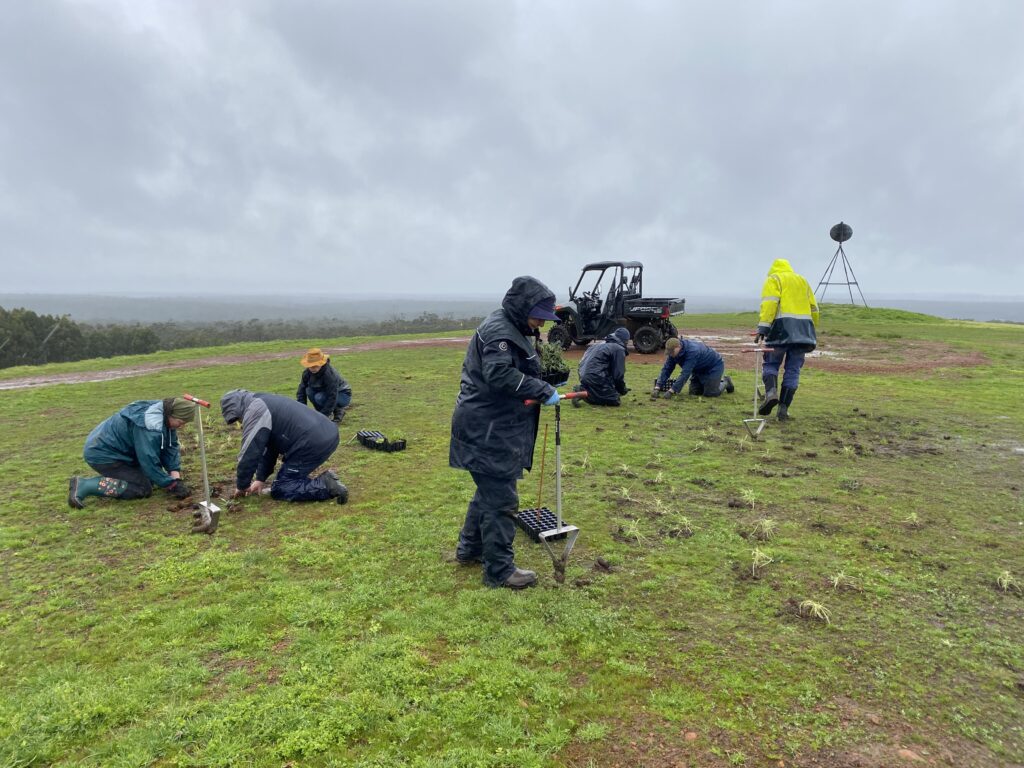
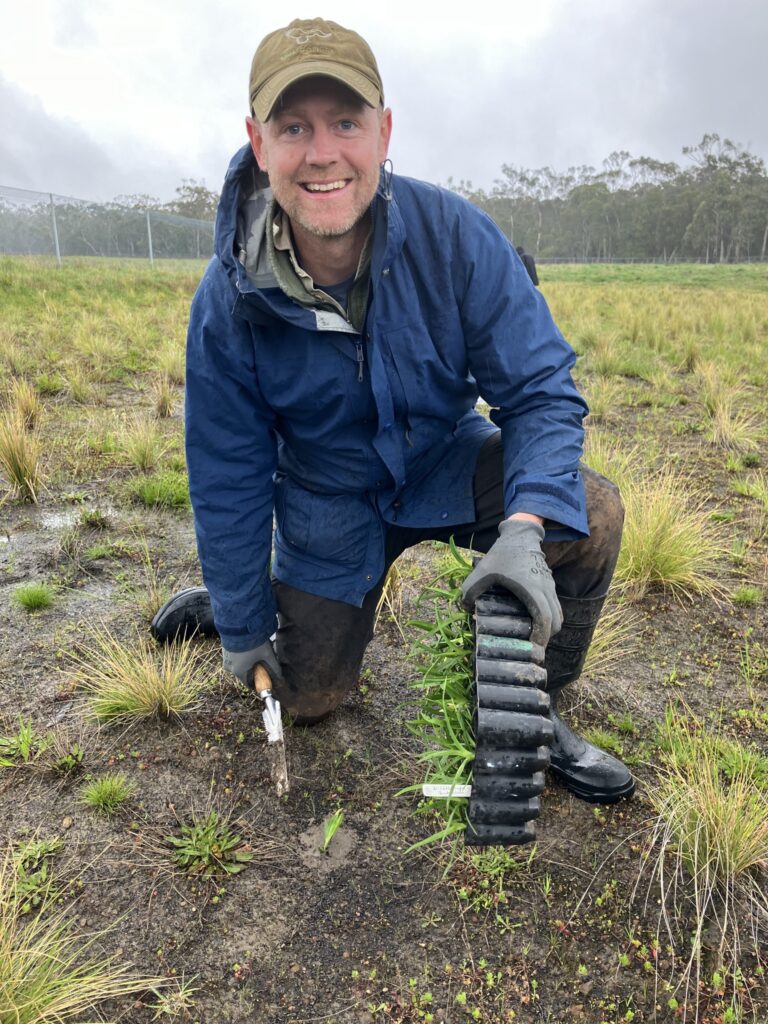
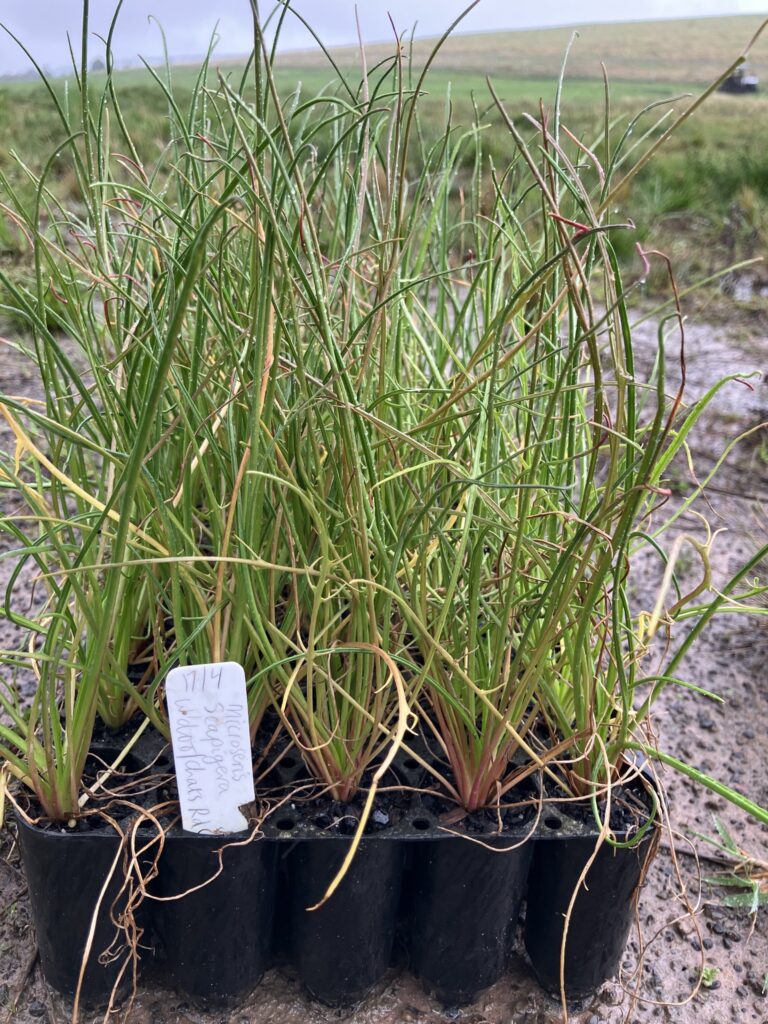
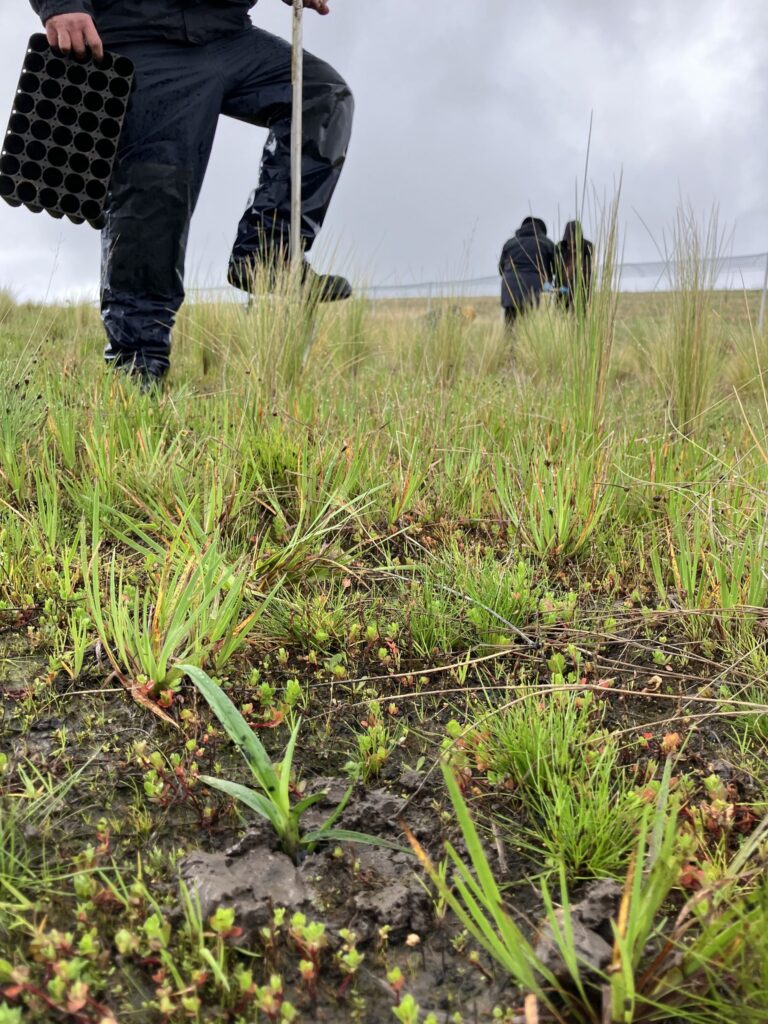
The following threatened species were planted (840 plants in total):
Volcano summit:
- Craspedia basaltica (Derrinallum Billy-buttons) – Endangered (Vic)
- Rutidosis leptorhynchoides (Button Wrinklewort) – Endangered (Vic and Nationally)
- Senecio macrocarpus (Large-fruit Fireweed) – Critically Endangered (Vic), Vulnerable (Nationally)
Flatland at the base of the volcano:
- Amphibromus pithogastrus (Plump Swamp Wallaby-grass) – Critically Endangered (Vic)
- Calotis anthemoides (Cut-leaf Burr-daisy) – Critically Endangered (Vic)
- Carex tasmanica (Curly Sedge) – Endangered (Vic)
- Dianella callicarpa (Swamp Flax-lily) – Endangered (Vic)
- Microseris scapigera (Murnong) – Critically Endangered (Vic)
This planting was supported by the Glenelg Hopkins Catchment Management Authority, the Victorian Government’s Nature Fund.

